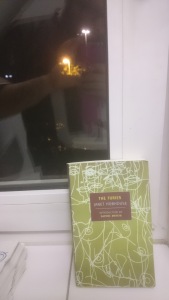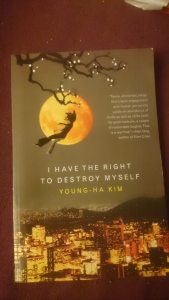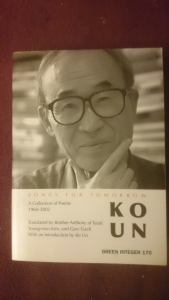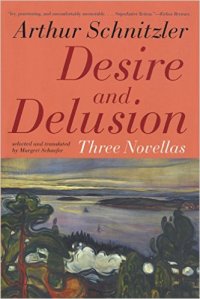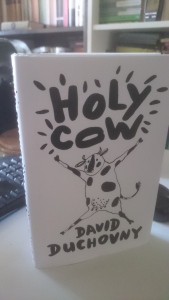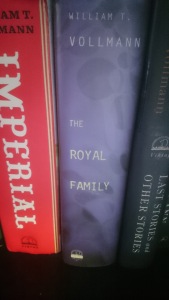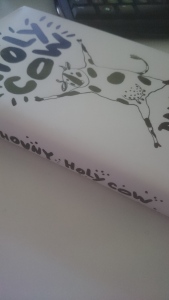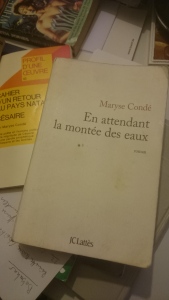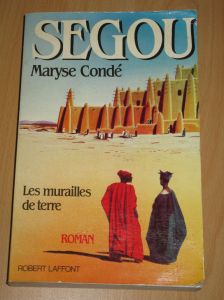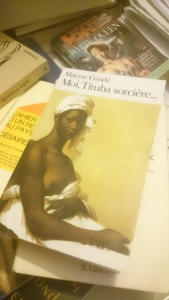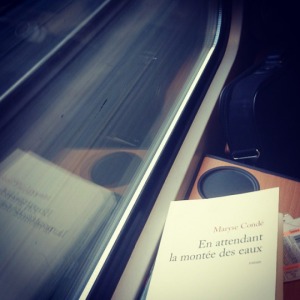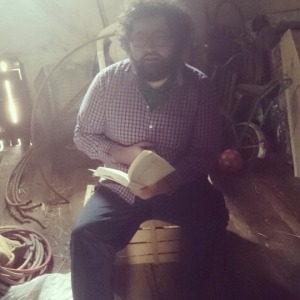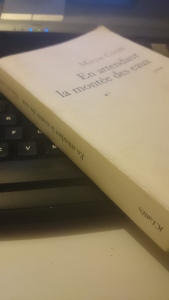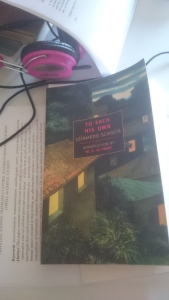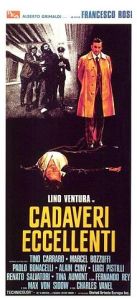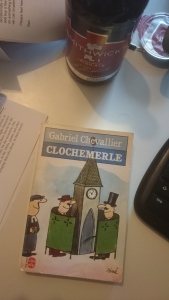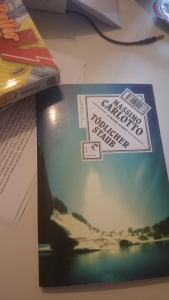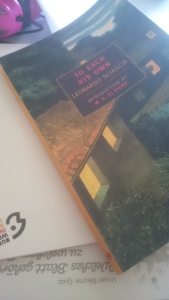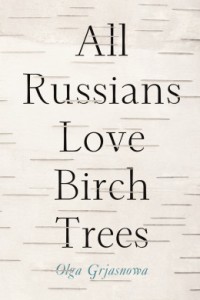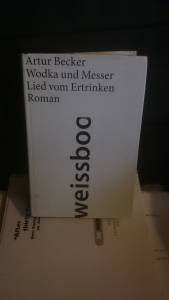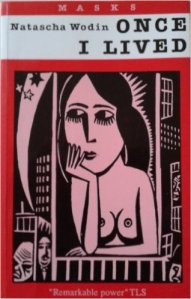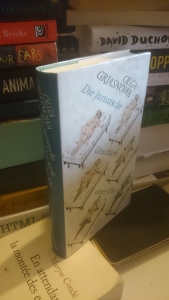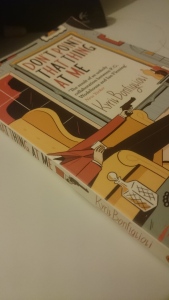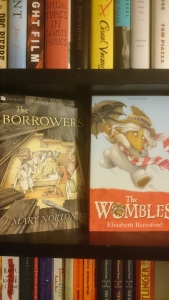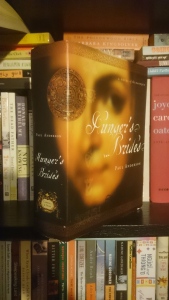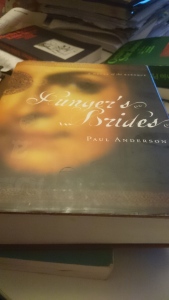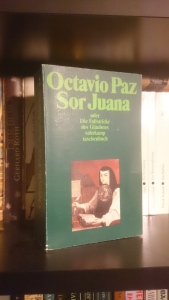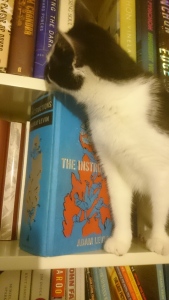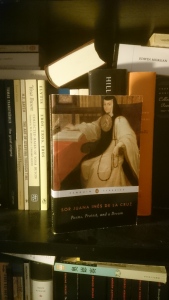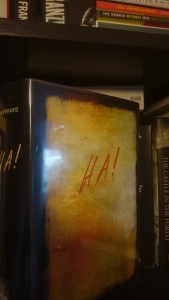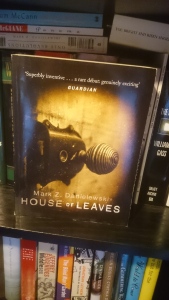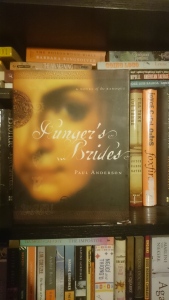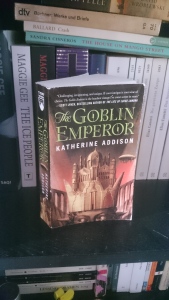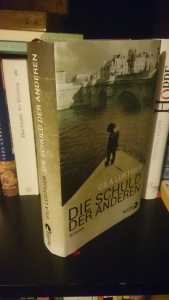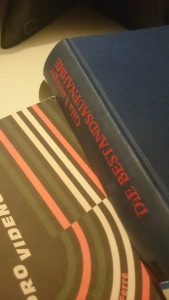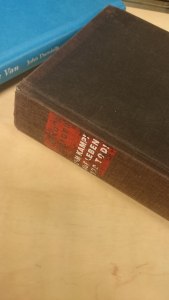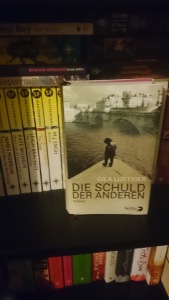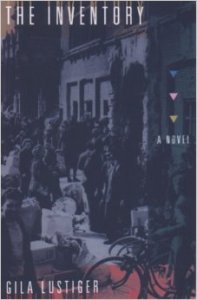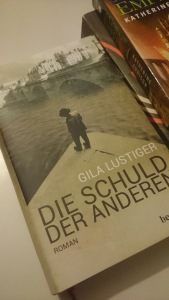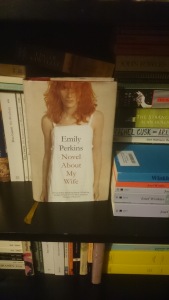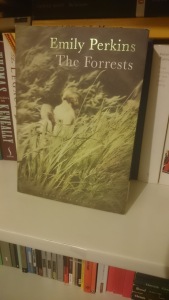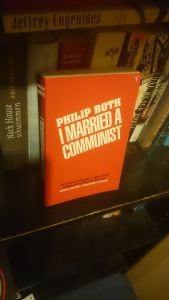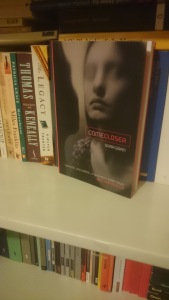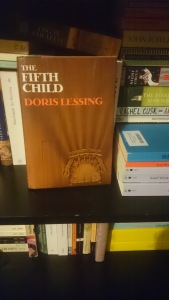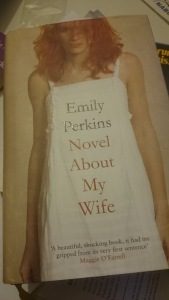Modiano, Patrick (1968, édition revue et corrigée 1995), La place de l’étoile, Gallimard.
ISBN 978-2-07-036698-9
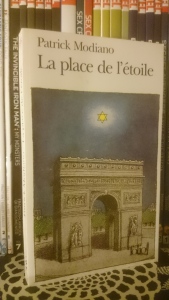 After Patrick Modiano won the Nobel Prize in Literature this year, French friends of mine expressed their satisfaction on Facebook. Finally! A readable and popular writer winning a prize infamous for rewarding the difficult and thorny. In my opinion, they couldn’t have meant the recent history of the prize (cf. my rant here), but then, writers from other literatures are often regarded as difficult by that fact alone, regardless of how well their books read. And over the past 4 or 5 decades, few literary writers have been as consistently and convincingly French as Modiano, whose vast and somewhat repetitive oeuvre offers small treasures of memory, walking down French memory lane. Small episodes, misremembered, identities hidden and revealed, the past inescapable but sometimes difficult to retrieve. Drawing on such sources as Maurice Halbwachs and Henri Bergson and incessantly commenting upon French literature and culture, he has become more than a mainstay of French literature. There is practically no newspaper that has not run an interview with him, including such venerable literary magazines as Paris-Match. Documentaries follow him through small French streets as he rediscovers places of French memory. He is that rare creature: the literary writer who sells well, gets great reviews and all this without the sophomoric need to shock his audience like Amis fils or Philip Roth do. A comfortable, popular writer, comforting the French audience. Can you feel me slowly dying of boredom?
After Patrick Modiano won the Nobel Prize in Literature this year, French friends of mine expressed their satisfaction on Facebook. Finally! A readable and popular writer winning a prize infamous for rewarding the difficult and thorny. In my opinion, they couldn’t have meant the recent history of the prize (cf. my rant here), but then, writers from other literatures are often regarded as difficult by that fact alone, regardless of how well their books read. And over the past 4 or 5 decades, few literary writers have been as consistently and convincingly French as Modiano, whose vast and somewhat repetitive oeuvre offers small treasures of memory, walking down French memory lane. Small episodes, misremembered, identities hidden and revealed, the past inescapable but sometimes difficult to retrieve. Drawing on such sources as Maurice Halbwachs and Henri Bergson and incessantly commenting upon French literature and culture, he has become more than a mainstay of French literature. There is practically no newspaper that has not run an interview with him, including such venerable literary magazines as Paris-Match. Documentaries follow him through small French streets as he rediscovers places of French memory. He is that rare creature: the literary writer who sells well, gets great reviews and all this without the sophomoric need to shock his audience like Amis fils or Philip Roth do. A comfortable, popular writer, comforting the French audience. Can you feel me slowly dying of boredom?
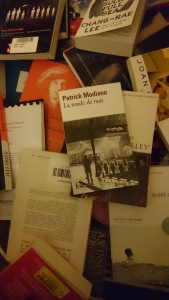 However, none of these descriptions, apart from those dealing with memory, apply to Modiano’s debut trilogy, and especially to his explosive debut La place de l’étoile, an unbelievable fever dream of history and literature, of memory and invention, of being Jewish and being French, “JUIF français,” as its narrator exclaims near the end of this novel. I have never read a novel like this one, a novel dealing with the aftermath of the Shoah, and with the resulting challenges to identities. The two books that come close in some small way are Modiano’s own follow-up efforts La Ronde de Nuit and Les Boulevards de Ceinture, both of which are less heated and angry, less over the top playful and insistent, but they can be seen as continuations on themes brought forth by La place de l’étoile. Modiano’s debut is not just a postmodern novel that combines parody and pastiche and piles reference on reference, it’s also clearly powered by the pain and the difficulties of Jewish identity after the second world war. Playful novels taking on the Shoah abound, but books both deeply steeped in a knowledge of literature and history, and fueled by a need to belong and to find an identity in a country that participated and supported the murder of Jews. I was not happy with an overall bland writer like Modiano being deemed nobélisable, but his debut novel is truly singular and masterful. It’s so harsh and poisonous that it was not translated into German until 2010. A great book. Read it.
However, none of these descriptions, apart from those dealing with memory, apply to Modiano’s debut trilogy, and especially to his explosive debut La place de l’étoile, an unbelievable fever dream of history and literature, of memory and invention, of being Jewish and being French, “JUIF français,” as its narrator exclaims near the end of this novel. I have never read a novel like this one, a novel dealing with the aftermath of the Shoah, and with the resulting challenges to identities. The two books that come close in some small way are Modiano’s own follow-up efforts La Ronde de Nuit and Les Boulevards de Ceinture, both of which are less heated and angry, less over the top playful and insistent, but they can be seen as continuations on themes brought forth by La place de l’étoile. Modiano’s debut is not just a postmodern novel that combines parody and pastiche and piles reference on reference, it’s also clearly powered by the pain and the difficulties of Jewish identity after the second world war. Playful novels taking on the Shoah abound, but books both deeply steeped in a knowledge of literature and history, and fueled by a need to belong and to find an identity in a country that participated and supported the murder of Jews. I was not happy with an overall bland writer like Modiano being deemed nobélisable, but his debut novel is truly singular and masterful. It’s so harsh and poisonous that it was not translated into German until 2010. A great book. Read it.
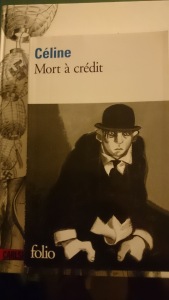 The plot of Modiano’s novel is difficult to summarize, not just because so much action is crammed into ~200 pages, but because much of it is contradictory and strange. As Charles O’Keefe pointed out in his slightly odd study of Modiano, there are “problems of understanding at the mimetic level” – Modiano’s main concern is intellectual, not narratological. There are whole sections whose main purpose is to provide a pastiche of this or that writer, or to summarize this or that cultural phenomenon, sections that pretend to provide a part of the story. The narrator is Raphael Schlemilovich who may or may not have lived during the Occupation of France, who may or may not have worked with famous collaborators and antisemites, and who may or may not have been the lover of Eva Braun. The postwar history of Schlemilovich is more firm. In it, Modiano’s protagonist makes a big inheritance, travels France and Europe with his father, a Jewish-American businessman, opens at least one brothel and traffics white, pure-bred French women to become prostitutes in others. He becomes a student and a teacher, a writer and a collector of books. There’s a lot of life to be lived and in a dramatic turns of events, eventually, he ends up in Israel. Explaining any of the plot or telling you how one thing leads to the other would be to spoil your fun. Trust me, it’s a wild ride – and one not entirely interested in consistency. As Ora Avni has said, “literature, like dreams, is not subject to the same logical imperative to choose from among several contradictory alternatives.” Modiano offers us multiple realities at the same time. Places become mutable, servants to narrative and memory. This is not to say that Modiano’s novel gives us empty intellectual blather that is as unreadable as it is hard to summarize. I may be partial to that kind of book, but La place de l’étoile is not it. The story is gripping, the prose intentionally dips into melodrama and eroticism, as well as into slapstick and more elaborate humor. Reading Modiano’s later work is a sophisticated enjoyment, the dry fun of measured intellect. His debut is more riotous fun, but like the bar in From Dusk till Dawn, it’s fun constructed on an abyss of darkness.
The plot of Modiano’s novel is difficult to summarize, not just because so much action is crammed into ~200 pages, but because much of it is contradictory and strange. As Charles O’Keefe pointed out in his slightly odd study of Modiano, there are “problems of understanding at the mimetic level” – Modiano’s main concern is intellectual, not narratological. There are whole sections whose main purpose is to provide a pastiche of this or that writer, or to summarize this or that cultural phenomenon, sections that pretend to provide a part of the story. The narrator is Raphael Schlemilovich who may or may not have lived during the Occupation of France, who may or may not have worked with famous collaborators and antisemites, and who may or may not have been the lover of Eva Braun. The postwar history of Schlemilovich is more firm. In it, Modiano’s protagonist makes a big inheritance, travels France and Europe with his father, a Jewish-American businessman, opens at least one brothel and traffics white, pure-bred French women to become prostitutes in others. He becomes a student and a teacher, a writer and a collector of books. There’s a lot of life to be lived and in a dramatic turns of events, eventually, he ends up in Israel. Explaining any of the plot or telling you how one thing leads to the other would be to spoil your fun. Trust me, it’s a wild ride – and one not entirely interested in consistency. As Ora Avni has said, “literature, like dreams, is not subject to the same logical imperative to choose from among several contradictory alternatives.” Modiano offers us multiple realities at the same time. Places become mutable, servants to narrative and memory. This is not to say that Modiano’s novel gives us empty intellectual blather that is as unreadable as it is hard to summarize. I may be partial to that kind of book, but La place de l’étoile is not it. The story is gripping, the prose intentionally dips into melodrama and eroticism, as well as into slapstick and more elaborate humor. Reading Modiano’s later work is a sophisticated enjoyment, the dry fun of measured intellect. His debut is more riotous fun, but like the bar in From Dusk till Dawn, it’s fun constructed on an abyss of darkness.
 There are many literary and historical references, too many to recount. The three main intertexts, however, are Adelbert von Chamisso’s Peter Schlemihls wundersame Geschichte (there’s a translation into English by Leopold von Loewenstein-Wertheim, published by Oneworld Classics, maybe you should seek it out?), Marcel Proust’s À la recherche du temps perdu and Louis-Ferdinand Céline’s work, particularly the infamous Bagatelle and the more widely accepted and praised Voyage au bout de la nuit. Chamisso’s influence is underappreciated in commentary on the book. While it’s true that Modiano’s spelling puts his protagonist closer to the yiddish word “schlemil”, meaning idiot or fool, Chamisso’s book provides and interesting angle. Chamisso, while publishing his novella in German and exerting a certain influence on German literature (he was friends with E.T.A. Hoffmann, of “Sandman” fame; and the main German award for foreign-born writers is named after Chamisso), was French by birth and kept returning to France. A nobleman, he fled revolutionary France for the more accommodating arms of Prussia, where he worked in literature and botany. His only novella recounts the story of a man who sells his shadow to the devil, manages to keep his soul, however, in a mixed bag of bargains with Satan. It was written to provide a metaphor for Chamisso’s pain of losing his home and living in exile. His character, the eponymous Peter Schlemihl, roams the earth, infinitely rich (the bargain won him a bag of infinite gold), but rejected everywhere he went. For a book that trades as heavily in antisemitic stereotypes as La place de l’étoile, this wandering character offers an appealing mixture of pure-bred French nobility and a character who is close to the antisemitic stereotype of the rich wandering Jew. Not to mention the fact that for parts of his novel, Modiano’s Schlemi(h)lovich constructs himself as being in a sort of permanent exile from France, and being, quite literally, a rich, wandering Jew. Modiano’s novel appropriates and discusses the rich history of French antisemitism, from the middle ages to the French complicity in the Shoah. A character that both fits the stereotype and was conceived of, written and identified with by a French nobleman is such a great fit for this book as to appear an invention of Modiano. Except for the fact that, delirious narrative aside, there’s little that’s actually invented out of whole cloth by Modiano. His method is one that fuses reality and literary history, that uses literature in the same way a historian would employ his sources. And those sources don’t end with Chamisso.
There are many literary and historical references, too many to recount. The three main intertexts, however, are Adelbert von Chamisso’s Peter Schlemihls wundersame Geschichte (there’s a translation into English by Leopold von Loewenstein-Wertheim, published by Oneworld Classics, maybe you should seek it out?), Marcel Proust’s À la recherche du temps perdu and Louis-Ferdinand Céline’s work, particularly the infamous Bagatelle and the more widely accepted and praised Voyage au bout de la nuit. Chamisso’s influence is underappreciated in commentary on the book. While it’s true that Modiano’s spelling puts his protagonist closer to the yiddish word “schlemil”, meaning idiot or fool, Chamisso’s book provides and interesting angle. Chamisso, while publishing his novella in German and exerting a certain influence on German literature (he was friends with E.T.A. Hoffmann, of “Sandman” fame; and the main German award for foreign-born writers is named after Chamisso), was French by birth and kept returning to France. A nobleman, he fled revolutionary France for the more accommodating arms of Prussia, where he worked in literature and botany. His only novella recounts the story of a man who sells his shadow to the devil, manages to keep his soul, however, in a mixed bag of bargains with Satan. It was written to provide a metaphor for Chamisso’s pain of losing his home and living in exile. His character, the eponymous Peter Schlemihl, roams the earth, infinitely rich (the bargain won him a bag of infinite gold), but rejected everywhere he went. For a book that trades as heavily in antisemitic stereotypes as La place de l’étoile, this wandering character offers an appealing mixture of pure-bred French nobility and a character who is close to the antisemitic stereotype of the rich wandering Jew. Not to mention the fact that for parts of his novel, Modiano’s Schlemi(h)lovich constructs himself as being in a sort of permanent exile from France, and being, quite literally, a rich, wandering Jew. Modiano’s novel appropriates and discusses the rich history of French antisemitism, from the middle ages to the French complicity in the Shoah. A character that both fits the stereotype and was conceived of, written and identified with by a French nobleman is such a great fit for this book as to appear an invention of Modiano. Except for the fact that, delirious narrative aside, there’s little that’s actually invented out of whole cloth by Modiano. His method is one that fuses reality and literary history, that uses literature in the same way a historian would employ his sources. And those sources don’t end with Chamisso.
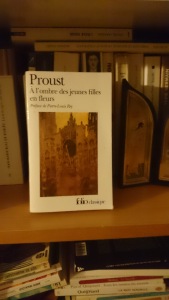 Another source, perhaps the major source, is Proust. This one keeps turning up in the book, as a major Jewish intertext of whose influence the narrator has to be purged. Some parts of the influence are pastiche or parody. Proust’s novel begins with “Longtemps,…” and Modiano begins with “C’était le temps….”. He revises the George Sand scene from Combray by explaining that “Maman me délaisse pour des joureurs de polo. Elle vient m’embrasser le soir dans mon lit, mais quelquefois elle ne s’en donne pas la peine” and in one of the most erotically charged parts of the book, his admiration of a French nobelwoman is a whole glorious pastiche of Proust’s descriptions of the Guermantes in his book, until he breaks off the scene by having the heiress accost him with bare breasts and a hunger for a Jewish lover. This juxtaposition of elegance and description with racist, antisemitic or misogynist crudeness serves to keep the novel organized. Its chaos is anything but. Modiano doesn’t sneak pastiches into the book. He announces them by a change in style and mood, and announces similarly when they have passed. I’m sure there are parodies or pastiches that I’ve missed, but most are rather forward and open, like the parody of Celine’s style in the opening pages. These breaks additionally keep us on our toes. The use of Proust is more than decoration, it’s an active agent. The constant use of Proust is nagging us to read Modiano’s novel in terms of memory, of self creation and décreation, to borrow a term from Simone Weil. Modiano dissolves all involuntary memory in a present that basically co-exists with the past, an effect that transposes an interior mechanism of Proust’s into exterior action and narrative. With Bergson, Proust saw memory as fusing with the present in a creative, if involuntary act. Modiano goes ahead and just fuses everything in a more or less co-temporary plane. For the question of WHY Modiano would do such a thing we could offer different answers.
Another source, perhaps the major source, is Proust. This one keeps turning up in the book, as a major Jewish intertext of whose influence the narrator has to be purged. Some parts of the influence are pastiche or parody. Proust’s novel begins with “Longtemps,…” and Modiano begins with “C’était le temps….”. He revises the George Sand scene from Combray by explaining that “Maman me délaisse pour des joureurs de polo. Elle vient m’embrasser le soir dans mon lit, mais quelquefois elle ne s’en donne pas la peine” and in one of the most erotically charged parts of the book, his admiration of a French nobelwoman is a whole glorious pastiche of Proust’s descriptions of the Guermantes in his book, until he breaks off the scene by having the heiress accost him with bare breasts and a hunger for a Jewish lover. This juxtaposition of elegance and description with racist, antisemitic or misogynist crudeness serves to keep the novel organized. Its chaos is anything but. Modiano doesn’t sneak pastiches into the book. He announces them by a change in style and mood, and announces similarly when they have passed. I’m sure there are parodies or pastiches that I’ve missed, but most are rather forward and open, like the parody of Celine’s style in the opening pages. These breaks additionally keep us on our toes. The use of Proust is more than decoration, it’s an active agent. The constant use of Proust is nagging us to read Modiano’s novel in terms of memory, of self creation and décreation, to borrow a term from Simone Weil. Modiano dissolves all involuntary memory in a present that basically co-exists with the past, an effect that transposes an interior mechanism of Proust’s into exterior action and narrative. With Bergson, Proust saw memory as fusing with the present in a creative, if involuntary act. Modiano goes ahead and just fuses everything in a more or less co-temporary plane. For the question of WHY Modiano would do such a thing we could offer different answers.
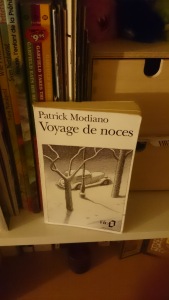 Some would touch on the basic concept of memory being important in literature after the Shoah. The Shoah, with its wholesale destruction of culture and living witnesses is a hazard to the production of memory as outlined by Halbwachs and others. This is why writers like Shoshana Felman and Dori Laub spoke of a “crisis of witnessing”. Personal, individual memory is not enough. It needs to be infused into culture, into cultural memory. In one of the more ‘outrageous’ moments of the book, a friend of Schlemilovich’s explains that, “[n]on content de débaucher les femmes de ce pays, j’ai voulu aussi prostitué toute la littérature française [et la] [t]ransformer.” This transformation, on the face of it, is an act of vandalism, of “vengeance”, as his friend says. But on a broader level, it also describes what needs to be done for the memory of the Shoah to survive and for the horrors of it to be contextualized. It didn’t come out of nowhere and tirelessly, Modiano drags out ancient and modern instances of French antisemitism. Another use of Proust could be suggested if we read Beckett’s famous and masterful study of Proust. In a summary of a particular episode, Beckett tells us
Some would touch on the basic concept of memory being important in literature after the Shoah. The Shoah, with its wholesale destruction of culture and living witnesses is a hazard to the production of memory as outlined by Halbwachs and others. This is why writers like Shoshana Felman and Dori Laub spoke of a “crisis of witnessing”. Personal, individual memory is not enough. It needs to be infused into culture, into cultural memory. In one of the more ‘outrageous’ moments of the book, a friend of Schlemilovich’s explains that, “[n]on content de débaucher les femmes de ce pays, j’ai voulu aussi prostitué toute la littérature française [et la] [t]ransformer.” This transformation, on the face of it, is an act of vandalism, of “vengeance”, as his friend says. But on a broader level, it also describes what needs to be done for the memory of the Shoah to survive and for the horrors of it to be contextualized. It didn’t come out of nowhere and tirelessly, Modiano drags out ancient and modern instances of French antisemitism. Another use of Proust could be suggested if we read Beckett’s famous and masterful study of Proust. In a summary of a particular episode, Beckett tells us
But this resumption of a past life is poisoned by a cruel anachronism: [Marcel’s] grandmother is dead. For the first time since her death […] he has recovered her living and complete, […]. For the first time since her death he knows that she is dead, he knows who is dead. […] This contradiction between presence and irremediable obliteration is intolerable.
Modiano’s book, with its turns and quirks, its changes and challenges, can be seen as a recovery of a presence, that of Jewish life in France, of French Jews, “un JUIF français,” as Schlemilovich throws out defiantly towards the end of the book. This reading is supported by the fact that the further we burrow into the book’s madness and the closer we get to its end, the more loudly Modiano speaks of the Shoah. In a scene towards the end, a drunkard on Vienna’s streets yells loudly “6 Millionen Juden! 6 Millionen Juden!”
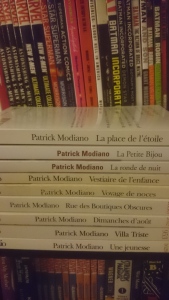 There is also a movement towards a more precise sense of place. In its early goings, Modiano’s book mixes real and fictional places. A womanizer early on tells him stories of women he’s been with, and that list contains famous prostitutes, as well as “Odette de Crecy”, the courtesan from Proust’s novel. Modiano makes Bardamu, the WWI veteran and doctor of Celine’s novel Voyage au bout de la nuit, into a real person, who Schlemilovich interacts with, just as he interacts with Freud, Himmler, Eva Braun and a veritable who-is-who of the French collaborator scene, including complicated figures like the Jewish collaborator (and Catholic convert) Maurice Sachs. At the end of the book, however, we get a genuine sense of place, as the Gestapo sites in Paris are named one by one:
There is also a movement towards a more precise sense of place. In its early goings, Modiano’s book mixes real and fictional places. A womanizer early on tells him stories of women he’s been with, and that list contains famous prostitutes, as well as “Odette de Crecy”, the courtesan from Proust’s novel. Modiano makes Bardamu, the WWI veteran and doctor of Celine’s novel Voyage au bout de la nuit, into a real person, who Schlemilovich interacts with, just as he interacts with Freud, Himmler, Eva Braun and a veritable who-is-who of the French collaborator scene, including complicated figures like the Jewish collaborator (and Catholic convert) Maurice Sachs. At the end of the book, however, we get a genuine sense of place, as the Gestapo sites in Paris are named one by one:
31 bis et 72 avenue Foch. 57 boulevard Lannes. 48 rue de Villejust. 101 avenue Henri-Martin. 3 et 5 rue Mallet-Stevens. 21 et 23 square de Bois-de-Boulogne. 25 rue d’Astorg. 6 rue Adolphe-Yvon. 64 boulevard Suchet. 49 rue de la Faisanderie. 180 rue de la Pompe.
This is a sudden return to reality, to what Pierre Nora called “Lieux de Mémoire”, places of memory. If you want to get a brief but succinct summary of Nora’s role in creating a postwar political and historical memory in France, I recommend Hue-Tam Ho Tai’s essay “Remembered Realms: Pierre Nora and French National Memory” – overall, suffice it to say that France has been particularly enganged in gauging the workings of cultural and public memory and that places, be they monuments or remembered, enshrined or described places, play a central role in this. But to get back to Chamisso and Proust: Modiano’s project is private as well as public (and I don’t mean odd ideas like O’Keefe’s theory of fratricide). It’s about the identity of being a French Jew. A Jew in a France that, as reactionary intellectuals like Maurras have said, can only be understood by those whose roots are deep in French history, excluding the “wandering Jews” – Jewishness can be an involuntary identity, as many German and French Jews learned during the Third Reich, when it was declared that everybody’s a Jew who has Jewish ancestry – not only those who openly identified as Jews. There’s a sense in which Jewishness is circumscribed by writers about Jewishness, that’s it’s defined by others – and Modiano’s Schlemilovich takes on the role of those who do the defining for parts of the novel. This leery attitude towards history writing is also one of the ways in which Modiano sets himself apart from later, lesser works. The bloody, overly sexualized reality of Jonathan Littell’s barnburner is anchored to an idea of reality that equals or exceeds historiography (see my review of HHhH). No such pretense makes it into Modiano’s pages.
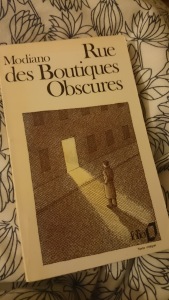 The book’s furor and inventiveness – as well as the age of its 23 year old author – preclude it from tying up its issues in a neat knot. Echoing many readers, its last lines are a declaration by Schlemilovich: “Je suis bien fatigué”. The followup novel, published only one year later, La Ronde de Nuit, doesn’t neatly continue the book’s trajectory, but does elaborate on its themes in a language not far removed from the debut. It’s about a double agent in Vichy France, but it does not name and use places as heavily as the latter third of La place de l’étoile. Les Boulevards de Ceintures, the third novel, is more explicit in naming places and dealing with the occupation. Like the debut, it delves deeply into issues of Jewish identity, of guilt and collaboration. At its center is a father/son relationship, which doubles as an analogue to the French/Jewish identity conflict. How, as a writer in a France that persecuted its Jews, do you construct a Jewish identity that is also a French one? The conflict is overwhelming, and the dark and involved language of Modiano’s first three books, especially of his debut, is testament to those difficulties. Boulevards de Ceintures ends with the exhortation by a barman lecturing the young Jewish son, researching his past (and by implication, France’s Vichy past) that, in the protagonist’s words, “je ferais mieux de penser à l’avenir”. If we look at the rest of Modiano’s work, it’s as if Modiano’s passion and the pain powering those books burned itself out. There are book that work as reprises of smaller themes, such as the research at the heart of Dora Bruder that recalls the search in Boulevards de Ceintures, but the pervasive search for memory and identity is more anodyne in the later books, more personal, less political. Mind you, it still puts Modiano heads and shoulders above writers like Paul Auster, who was inspired by books like the 1978 novel Rue des Boutiques Obscures to create his New York Trilogy, but doesn’t invest it with any of the historical urgency that Modiano still drags through his books, even if it’s in a reduced, backgrounded way. It’s a disappointment if you come to later Modiano after being introduced to him through his amazing debut, but at the same time, knowing how Modiano framed and discussed the cultural and personal stakes of postwar identity helps read his books in a deeper context.
The book’s furor and inventiveness – as well as the age of its 23 year old author – preclude it from tying up its issues in a neat knot. Echoing many readers, its last lines are a declaration by Schlemilovich: “Je suis bien fatigué”. The followup novel, published only one year later, La Ronde de Nuit, doesn’t neatly continue the book’s trajectory, but does elaborate on its themes in a language not far removed from the debut. It’s about a double agent in Vichy France, but it does not name and use places as heavily as the latter third of La place de l’étoile. Les Boulevards de Ceintures, the third novel, is more explicit in naming places and dealing with the occupation. Like the debut, it delves deeply into issues of Jewish identity, of guilt and collaboration. At its center is a father/son relationship, which doubles as an analogue to the French/Jewish identity conflict. How, as a writer in a France that persecuted its Jews, do you construct a Jewish identity that is also a French one? The conflict is overwhelming, and the dark and involved language of Modiano’s first three books, especially of his debut, is testament to those difficulties. Boulevards de Ceintures ends with the exhortation by a barman lecturing the young Jewish son, researching his past (and by implication, France’s Vichy past) that, in the protagonist’s words, “je ferais mieux de penser à l’avenir”. If we look at the rest of Modiano’s work, it’s as if Modiano’s passion and the pain powering those books burned itself out. There are book that work as reprises of smaller themes, such as the research at the heart of Dora Bruder that recalls the search in Boulevards de Ceintures, but the pervasive search for memory and identity is more anodyne in the later books, more personal, less political. Mind you, it still puts Modiano heads and shoulders above writers like Paul Auster, who was inspired by books like the 1978 novel Rue des Boutiques Obscures to create his New York Trilogy, but doesn’t invest it with any of the historical urgency that Modiano still drags through his books, even if it’s in a reduced, backgrounded way. It’s a disappointment if you come to later Modiano after being introduced to him through his amazing debut, but at the same time, knowing how Modiano framed and discussed the cultural and personal stakes of postwar identity helps read his books in a deeper context.
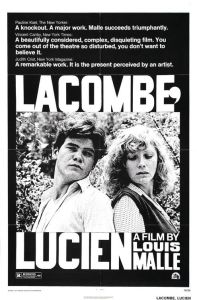 Part of my reading of Modiano’s work as one of diminishing returns includes the fact that all his best work happened within his first ten years as a writer, with La Place de l’Étoile and Rue des Boutiques obscures as standout milestones at each end of it. I have already explained that I consider his debut to be his best work, but there is another text that comes close, and it, too, was written in that early period. This work is the script for Lacombe Lucien (1974), which he co-wrote with Louis Malle. Now, while I am hesitant to proclaim the greatness of Modiano, I would suggest it’s fairly agreed upon that Louis Malle is among last century’s greatest directors. Lacombe Lucien is a transcendent movie, excellent from start to finish. From casting to script and cinematography, there are few faults to find with this movie. The story is centered around the eponymous Lucien, a strange boy living in a French village during WWII, who wants to join the Résistance to indulge his taste for violence, but is rebuffed. Instead, he ends up joining the “German police” or rather a French militia that resides in a villa and hunts down members of the Résistance. Immediately, he informs on his old school teacher, of whom he knows the role in the Résistance. Many of Modiano’s topics recur in the movie: the guilt during wartime France, the historical burden of French antisemitism, the lies and secrets. And as in much of his work, the focal character is a boy. And while in most of Modiano’s work after the debut, stories of wartime France are cushioned in a framework of memory and remembrance, sometimes aiming, but obviously missing, for the poise, elegance and urgency of Proust, Lacombe Lucien‘s effect is immediate and stark. Much of the movie’s tension comes from its viewers (and secondary characters) never really knowing where this story would take them. Lucien is an unpredictable character, cold, cruel, yet at the same time possessed of a queer innocence. The movie reclaims much of the strangeness and oddity of Modiano’s debut. The characters in the villa are not meant to be realistic – there’s a famous bicycle champion, an actress, a small, angry antisemite, a horny, mildly disloyal servant with a lazy eye, a smooth black gunman, dressed like a Chicago mobster and the head of the operation, who employs his mother as a secretary. They might look like a joke, but they proceed with violence and efficiency, terrorizing the whole countryside.
Part of my reading of Modiano’s work as one of diminishing returns includes the fact that all his best work happened within his first ten years as a writer, with La Place de l’Étoile and Rue des Boutiques obscures as standout milestones at each end of it. I have already explained that I consider his debut to be his best work, but there is another text that comes close, and it, too, was written in that early period. This work is the script for Lacombe Lucien (1974), which he co-wrote with Louis Malle. Now, while I am hesitant to proclaim the greatness of Modiano, I would suggest it’s fairly agreed upon that Louis Malle is among last century’s greatest directors. Lacombe Lucien is a transcendent movie, excellent from start to finish. From casting to script and cinematography, there are few faults to find with this movie. The story is centered around the eponymous Lucien, a strange boy living in a French village during WWII, who wants to join the Résistance to indulge his taste for violence, but is rebuffed. Instead, he ends up joining the “German police” or rather a French militia that resides in a villa and hunts down members of the Résistance. Immediately, he informs on his old school teacher, of whom he knows the role in the Résistance. Many of Modiano’s topics recur in the movie: the guilt during wartime France, the historical burden of French antisemitism, the lies and secrets. And as in much of his work, the focal character is a boy. And while in most of Modiano’s work after the debut, stories of wartime France are cushioned in a framework of memory and remembrance, sometimes aiming, but obviously missing, for the poise, elegance and urgency of Proust, Lacombe Lucien‘s effect is immediate and stark. Much of the movie’s tension comes from its viewers (and secondary characters) never really knowing where this story would take them. Lucien is an unpredictable character, cold, cruel, yet at the same time possessed of a queer innocence. The movie reclaims much of the strangeness and oddity of Modiano’s debut. The characters in the villa are not meant to be realistic – there’s a famous bicycle champion, an actress, a small, angry antisemite, a horny, mildly disloyal servant with a lazy eye, a smooth black gunman, dressed like a Chicago mobster and the head of the operation, who employs his mother as a secretary. They might look like a joke, but they proceed with violence and efficiency, terrorizing the whole countryside.
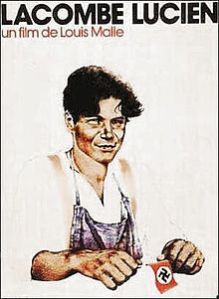 The slightly surreal quality that much of the movie has, the sometimes dreamlike sense of unreality is something that Modiano already perfected in his debut, together with the sexual politics of wartime antisemitism. There’s a blonde Jewish woman, who Lucien falls for immediately; she tells Lucien, in an intoxicated moment that she’s tired of being jewish. There are German Nazis in the movie but the only actual German we hear, apart from one phone call, is from the dialogue of a Jewish tailor who hides in the area. I feel like I’m doing a terrible job explaining the excellence of how the scenes and characters are constructed. The movie has an odd way of dealing with realism. It’s not just the strangeness of scenes and characters, sometimes Malle will keep the camera on a scene for long enough, that a sense of alienation creeps into the scene despite nothing odd having been added. One great example of this is an early scene, where a horse dies, and the villagers drag it onto a cart. This, already, takes quite some time, but then, Lucien is left behind with the horse, and he looks at it quizzically, caressing its face. It’s a frightening scene, it’s an encounter with animal physicality and death that shows us a clearer and deeper look into the desolation of Lucien’s soul than any other scene. To be clear, the movie is strange, surreal, but also highly realistic. Like Modiano’s other work, it becomes part of a process of collective memory, a contribution to critical debates about history, about the French role in WWII and so on. Yet, much as I might like to talk about this movie in terms of Modiano’s work, I don’t actually know how involved Malle was in the script. After all, Modiano, who was born in 1945, never lived through this period that was so important for his work. Modiano’s commitment is to cultural memory and its workings, not personal memory. Louis Malle, in contrast, was born in 1932, and has memories of being a boy in wartime France. I’m obviously more focused on Modiano here, but as a whole, it feels as if it’s more of a piece with Modiano’s work than Malle’s and yet given his novels, Modiano was no longer able to produce this kind of work. Maybe he needed Malle to return to the heights of his debut. Lacombe Lucien is truly extraordinary.
The slightly surreal quality that much of the movie has, the sometimes dreamlike sense of unreality is something that Modiano already perfected in his debut, together with the sexual politics of wartime antisemitism. There’s a blonde Jewish woman, who Lucien falls for immediately; she tells Lucien, in an intoxicated moment that she’s tired of being jewish. There are German Nazis in the movie but the only actual German we hear, apart from one phone call, is from the dialogue of a Jewish tailor who hides in the area. I feel like I’m doing a terrible job explaining the excellence of how the scenes and characters are constructed. The movie has an odd way of dealing with realism. It’s not just the strangeness of scenes and characters, sometimes Malle will keep the camera on a scene for long enough, that a sense of alienation creeps into the scene despite nothing odd having been added. One great example of this is an early scene, where a horse dies, and the villagers drag it onto a cart. This, already, takes quite some time, but then, Lucien is left behind with the horse, and he looks at it quizzically, caressing its face. It’s a frightening scene, it’s an encounter with animal physicality and death that shows us a clearer and deeper look into the desolation of Lucien’s soul than any other scene. To be clear, the movie is strange, surreal, but also highly realistic. Like Modiano’s other work, it becomes part of a process of collective memory, a contribution to critical debates about history, about the French role in WWII and so on. Yet, much as I might like to talk about this movie in terms of Modiano’s work, I don’t actually know how involved Malle was in the script. After all, Modiano, who was born in 1945, never lived through this period that was so important for his work. Modiano’s commitment is to cultural memory and its workings, not personal memory. Louis Malle, in contrast, was born in 1932, and has memories of being a boy in wartime France. I’m obviously more focused on Modiano here, but as a whole, it feels as if it’s more of a piece with Modiano’s work than Malle’s and yet given his novels, Modiano was no longer able to produce this kind of work. Maybe he needed Malle to return to the heights of his debut. Lacombe Lucien is truly extraordinary.
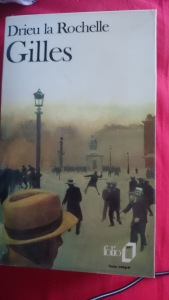 I keep saying this about books I admire, but my reading has barely touched on the complexities of La place de l’étoile. It’s a truly great book, and it rewards reading, rereading and analysis. I might even be wrong about it, and I suspect had my reading of Deleuze’s Proust book and Halbwachs’ work on memory been more recent (or if I had more time to reread them, as well as Proust and Céline) I could have made a better case in my arguments on memory. There is a whole line in French collaboration history that’s connected to homosexuality that, in the novel, can be read to tie into its discussions of Jewish sexuality (Otto Weininger might be apropos), as well as Proust and Céline, but I don’t have the room here for that nor do I have time to go back into research on this. I encourage everyone who made it to this part of the review to not only read the novel but to also use it to research at least all the names and places of it, reread their Proust and Céline, maybe some famous antisemites like Weininger. I know that it made me personally want to reread Gilles by Pierre Drieu La Rochelle, which, given the appropriate amount of leisure, I will do. If you want to support me in buying/reading books, there are ways to do so, too 😉
I keep saying this about books I admire, but my reading has barely touched on the complexities of La place de l’étoile. It’s a truly great book, and it rewards reading, rereading and analysis. I might even be wrong about it, and I suspect had my reading of Deleuze’s Proust book and Halbwachs’ work on memory been more recent (or if I had more time to reread them, as well as Proust and Céline) I could have made a better case in my arguments on memory. There is a whole line in French collaboration history that’s connected to homosexuality that, in the novel, can be read to tie into its discussions of Jewish sexuality (Otto Weininger might be apropos), as well as Proust and Céline, but I don’t have the room here for that nor do I have time to go back into research on this. I encourage everyone who made it to this part of the review to not only read the novel but to also use it to research at least all the names and places of it, reread their Proust and Céline, maybe some famous antisemites like Weininger. I know that it made me personally want to reread Gilles by Pierre Drieu La Rochelle, which, given the appropriate amount of leisure, I will do. If you want to support me in buying/reading books, there are ways to do so, too 😉
*
As always, if you feel like supporting this blog, there is a “Donate” button on the left and this link RIGHT HERE. 🙂 If you liked this, tell me. If you hated it, even better. Send me comments, requests or suggestions either below or via email (cf. my About page) or to my twitter.)
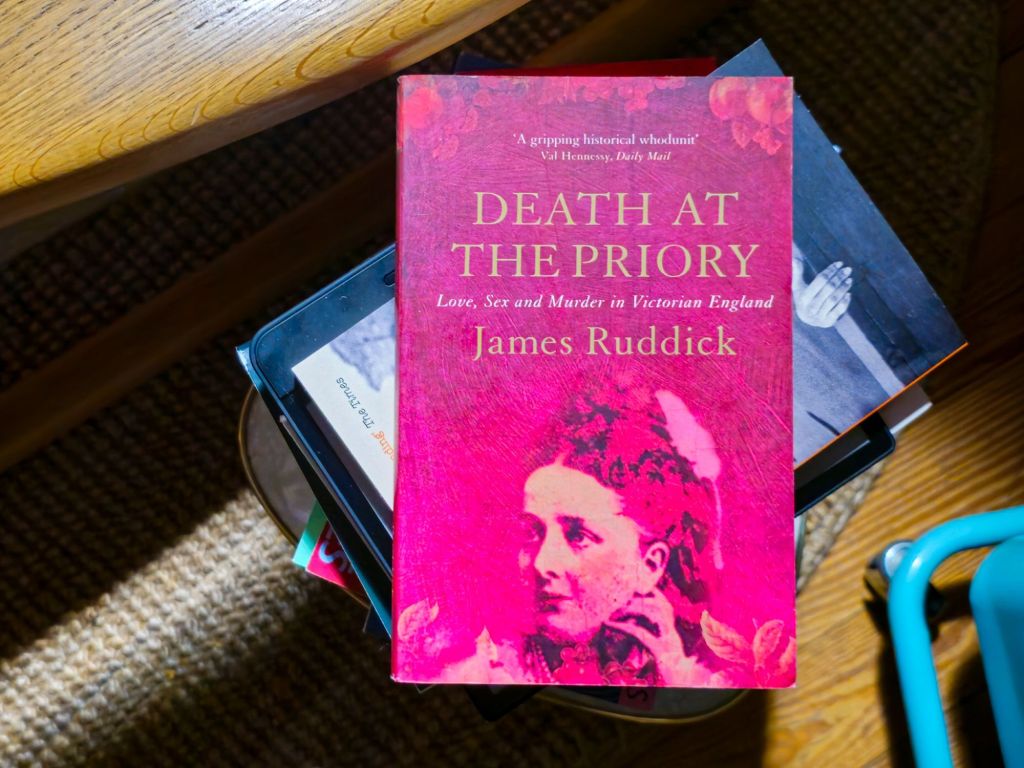














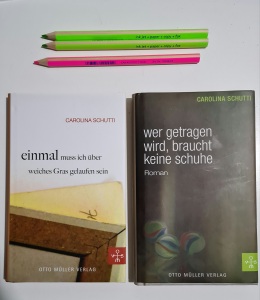
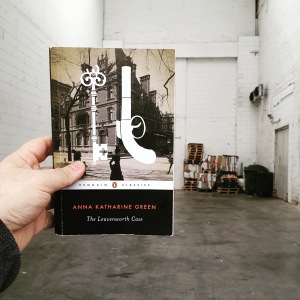



 That makes it a bit of a disappointment that her next novel, Available Dark, does not rise to the same heights. We appear to meet another art obsessive, we appear to be drawn into another maze of the arduous space between art and life, as Cass Neary is flown to Helsinki to help assess the value of a set of photographs. Instead, in this book, photography and the art and technique of it is incidental. Available Dark sidles up even closer to noir conventions, with Neary sometimes merely following the winds that blow her across the icy Scandinavian plains of a baroque plot. As the resolution presents itself I was more irritated than anything. A lot of stupid people doing stupid things and killing other people for even more generic, stupid reasons. I know that a lot of crime novels are centered around the stupid things that stupid people do (and the half-clever ways they try to cover it up), but that’s not what I find interesting. There’s a disturbing thing that happens at the end of Generation Loss that I am unwilling to spoil, but it is entirely in line with that book’s general theme, but it expands it, and opens up Cass Neary’s world into another direction – it’s tough to see it fall by the wayside within the first couple of pages of Available Dark, serving merely as motivation for Cass to take that Helsinki job. However, whatever misgivings I may have about Available Dark, they don’t tarnish Generation Loss, which is fantastic. Read it if you like that sort of thing. It’s good.
That makes it a bit of a disappointment that her next novel, Available Dark, does not rise to the same heights. We appear to meet another art obsessive, we appear to be drawn into another maze of the arduous space between art and life, as Cass Neary is flown to Helsinki to help assess the value of a set of photographs. Instead, in this book, photography and the art and technique of it is incidental. Available Dark sidles up even closer to noir conventions, with Neary sometimes merely following the winds that blow her across the icy Scandinavian plains of a baroque plot. As the resolution presents itself I was more irritated than anything. A lot of stupid people doing stupid things and killing other people for even more generic, stupid reasons. I know that a lot of crime novels are centered around the stupid things that stupid people do (and the half-clever ways they try to cover it up), but that’s not what I find interesting. There’s a disturbing thing that happens at the end of Generation Loss that I am unwilling to spoil, but it is entirely in line with that book’s general theme, but it expands it, and opens up Cass Neary’s world into another direction – it’s tough to see it fall by the wayside within the first couple of pages of Available Dark, serving merely as motivation for Cass to take that Helsinki job. However, whatever misgivings I may have about Available Dark, they don’t tarnish Generation Loss, which is fantastic. Read it if you like that sort of thing. It’s good.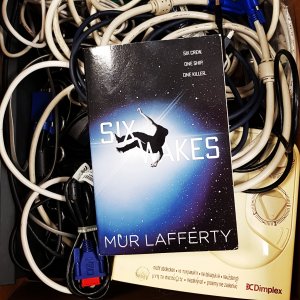







 So I have a lot of books in this apartment of mine,
So I have a lot of books in this apartment of mine, 








 I love Nina Allan. You can read my review of her debut novel The Race
I love Nina Allan. You can read my review of her debut novel The Race 

























 So after posting
So after posting 
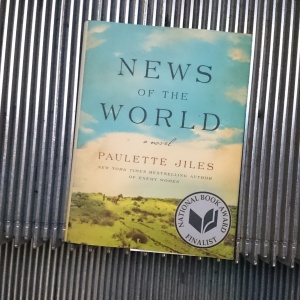


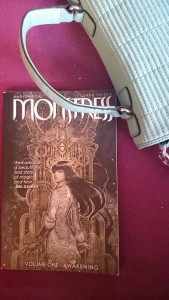







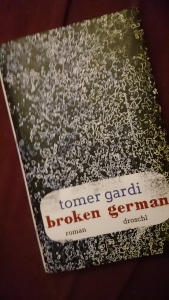




















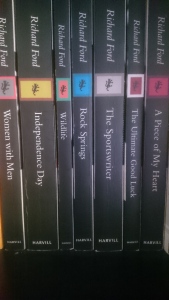


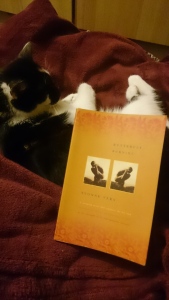









 After about 1,500 words of talk, I am not sure I conveyed to you that, with all this, The Guest Cat is a very good book. It sidesteps easy sentimentalism without losing emotional resonance. It creates multiple layers of significance by superimposing people and events on certain roles and things. One example is the way the author blends the Emperor’s death with the much smaller death of his landlord. The writing is not always disciplined, sometimes the author indulges in speculations about the cat’s presence in their lives that drag on for a bit. Like many men, the author likes to hear himself talk and he cannot always control the detrimental effects this has. This isn’t helped by the patchy language that sometimes slips awkwardly between registers, something that I tend to lay at the feet of the translator. Yet all of this is nitpicking. The writing is usually elegant, and the author modulates the architecture of his novel very well. While the aforementioned memoir by Junji Ito is exclusively of interest to people who love/have cats, The Guest Cat does not rely on shared affinities. It is a very nice book. It never attempts to go beyond its small confines of offering a small episode in the life of a writer, despite its reach into the larger fabric of the historical moment. Like a poem, then, say, one of Mary Oliver’s small ones or, more accurately, the luminous work of Wisława Szymborska, who populated several of her poems with cats, declaring once that “D[ying]—you can’t do that to a cat.” Hiraide does not have Szymborska’s precision, but that would be a tall order anyway. Yet with her, he shares a sense of how cats interact with spaces, with things and routines, how cats resist – and attach themselves to their human companions. It is something that rings very true to me, which returns us to the bias I admitted to in the first sentences of this review.
After about 1,500 words of talk, I am not sure I conveyed to you that, with all this, The Guest Cat is a very good book. It sidesteps easy sentimentalism without losing emotional resonance. It creates multiple layers of significance by superimposing people and events on certain roles and things. One example is the way the author blends the Emperor’s death with the much smaller death of his landlord. The writing is not always disciplined, sometimes the author indulges in speculations about the cat’s presence in their lives that drag on for a bit. Like many men, the author likes to hear himself talk and he cannot always control the detrimental effects this has. This isn’t helped by the patchy language that sometimes slips awkwardly between registers, something that I tend to lay at the feet of the translator. Yet all of this is nitpicking. The writing is usually elegant, and the author modulates the architecture of his novel very well. While the aforementioned memoir by Junji Ito is exclusively of interest to people who love/have cats, The Guest Cat does not rely on shared affinities. It is a very nice book. It never attempts to go beyond its small confines of offering a small episode in the life of a writer, despite its reach into the larger fabric of the historical moment. Like a poem, then, say, one of Mary Oliver’s small ones or, more accurately, the luminous work of Wisława Szymborska, who populated several of her poems with cats, declaring once that “D[ying]—you can’t do that to a cat.” Hiraide does not have Szymborska’s precision, but that would be a tall order anyway. Yet with her, he shares a sense of how cats interact with spaces, with things and routines, how cats resist – and attach themselves to their human companions. It is something that rings very true to me, which returns us to the bias I admitted to in the first sentences of this review.
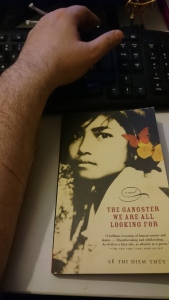








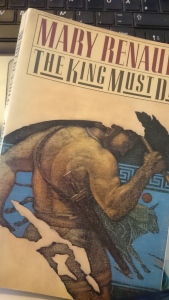

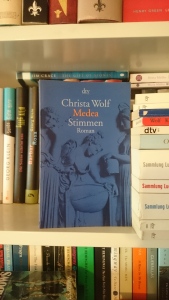






 One odd result is the way that Ebershoff uses the gaze. Greta, as he writes her, is imbued with a sometimes close to predatory gaze, an adjective I use because in some scenes, her erotically charged gaze appears to frighten or intimidate Lili, especially at the time when she presented exclusively as Einar. As a portrait artist, of course, the novel assigns the gaze as an uncomplicated, successful act, to her, but it does some odd things in order to achieve this. One is the fact that Ebershoff turns Greta from a Danish woman, which she was historically, to an American woman with an outsider’s fascination for Denmark. And not just any American woman: a rich heiress from California. Instead of offering us a psychologically plausible portrait of a Danish artist who falls in love with a wisp of a man who ends up transitioning to a woman, Ebershoff appears to have constructed his Greta from literary readymades. Henry James’ Isabel Archer probably looming largest, Greta, as we meet her in the novel, owes less to the historical character and more to the trope of the wild American woman who goes to Europe and gets into some kind of trouble there. It’s as if all the work and empathy that went into Lili meant that Ebershoff had to cut corners when it came to writing Greta. What’s more, the fact that Greta’s gaze is so strong, and so supported by wealth and social status, is balanced by a lack of confidence when it comes to Lili’s gaze. Not only is she the object of Greta’s sometimes irritatingly sexual regard (irritating because it plays on a long exploitative tradition), but she consistently fails to be able to establish one of her own. Mirrors are difficult, and even a mid-novel expedition to a real peep show ends in disgrace and expulsion. Now, this difference could be used productively, one remembers, for example, Heiner Müller’s remarks on the way the peep show is a trope for the way capitalist society functions. But Ebershoff never really does anything with this. These things happen almost in the background. Ebershoff deals with his material and, really, with his own novel, as if it was a translation of sorts and he was just trying to get the basic beats right. Honestly, that would explain the prose, as well. There is so much potential in the material that Ebershoff’s quick treatment of it is sometimes genuinely upsetting. The book is both bloated and oddly bare bones.
One odd result is the way that Ebershoff uses the gaze. Greta, as he writes her, is imbued with a sometimes close to predatory gaze, an adjective I use because in some scenes, her erotically charged gaze appears to frighten or intimidate Lili, especially at the time when she presented exclusively as Einar. As a portrait artist, of course, the novel assigns the gaze as an uncomplicated, successful act, to her, but it does some odd things in order to achieve this. One is the fact that Ebershoff turns Greta from a Danish woman, which she was historically, to an American woman with an outsider’s fascination for Denmark. And not just any American woman: a rich heiress from California. Instead of offering us a psychologically plausible portrait of a Danish artist who falls in love with a wisp of a man who ends up transitioning to a woman, Ebershoff appears to have constructed his Greta from literary readymades. Henry James’ Isabel Archer probably looming largest, Greta, as we meet her in the novel, owes less to the historical character and more to the trope of the wild American woman who goes to Europe and gets into some kind of trouble there. It’s as if all the work and empathy that went into Lili meant that Ebershoff had to cut corners when it came to writing Greta. What’s more, the fact that Greta’s gaze is so strong, and so supported by wealth and social status, is balanced by a lack of confidence when it comes to Lili’s gaze. Not only is she the object of Greta’s sometimes irritatingly sexual regard (irritating because it plays on a long exploitative tradition), but she consistently fails to be able to establish one of her own. Mirrors are difficult, and even a mid-novel expedition to a real peep show ends in disgrace and expulsion. Now, this difference could be used productively, one remembers, for example, Heiner Müller’s remarks on the way the peep show is a trope for the way capitalist society functions. But Ebershoff never really does anything with this. These things happen almost in the background. Ebershoff deals with his material and, really, with his own novel, as if it was a translation of sorts and he was just trying to get the basic beats right. Honestly, that would explain the prose, as well. There is so much potential in the material that Ebershoff’s quick treatment of it is sometimes genuinely upsetting. The book is both bloated and oddly bare bones.

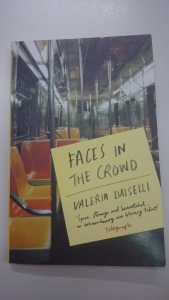
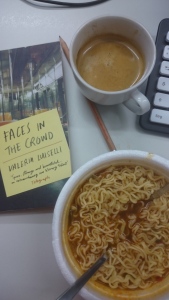
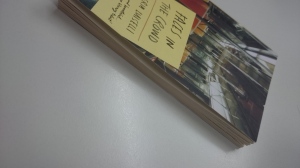
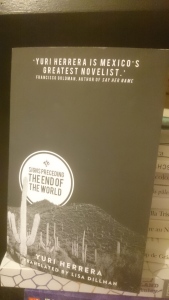 I had not heard of the writer before, but it’s a name I won’t soon forget. Yuri Herrera has, so far, written three short novels, the second of which, Signs Preceding The End of The World, has now found its way into English, in a translation that I found fantastic, published by And Other Stories. I don’t naturally know how close Dillman kept to the text and how much of the original is found in this English version, but she found a language that is strong, unique and fits the text, its story and its quirks to a t, which makes me think she did a good job. The book itself is a rich story that feeds equally off myth and realism, with its closest sibling (in my limited reading of latino literature) not the postmodernism of Roberto Bolaño, despite the thematic similarities especially with 2666; instead, the book that most came to mind is the one Mexican masterpiece pretty much everyone has read in one translation or another: Juan Rulfo’s spellbinding novel Pedro Páramo. It also reminded me of something odd in amazon’s current TV show Narcos, a slightly unpleasant American rewriting of recent Columbian history. It starts off with a disquisition on magical realism, but, as far as I have seen the show, does not offer any of it to its viewers, instead it’s a mixture of docudrama and realistic action. In this context, the way Herrera’s novel digs into myth, into the layers between life and death, consciousness and dream, appeared even more stark to me. But even without the contrast, this novel is captivating. After I finished it, I found it hard to believe that it was as short as it is. In it, we go to hell and back, we see how war and poverty and warp and hollow people out, and how threadbare, ultimately, the connection is that we have to our homes, no matter how strongly felt it might have been. Herrera discusses, in other sections, the border issues between Mexico and the US, offers a suggestion involving a broader sense of home and identity and takes a long, hard look at fear and necessity. This is very clearly among the best novels I have read all year and probably in the last 5 years, too. Herrera’s skill as a writer is beyond remarkable and Lisa Dillman’s translation is similarly good. Do yourself a favor and read this book. This is the most direct, unguarded recommendation I have given out all year. Go, now.
I had not heard of the writer before, but it’s a name I won’t soon forget. Yuri Herrera has, so far, written three short novels, the second of which, Signs Preceding The End of The World, has now found its way into English, in a translation that I found fantastic, published by And Other Stories. I don’t naturally know how close Dillman kept to the text and how much of the original is found in this English version, but she found a language that is strong, unique and fits the text, its story and its quirks to a t, which makes me think she did a good job. The book itself is a rich story that feeds equally off myth and realism, with its closest sibling (in my limited reading of latino literature) not the postmodernism of Roberto Bolaño, despite the thematic similarities especially with 2666; instead, the book that most came to mind is the one Mexican masterpiece pretty much everyone has read in one translation or another: Juan Rulfo’s spellbinding novel Pedro Páramo. It also reminded me of something odd in amazon’s current TV show Narcos, a slightly unpleasant American rewriting of recent Columbian history. It starts off with a disquisition on magical realism, but, as far as I have seen the show, does not offer any of it to its viewers, instead it’s a mixture of docudrama and realistic action. In this context, the way Herrera’s novel digs into myth, into the layers between life and death, consciousness and dream, appeared even more stark to me. But even without the contrast, this novel is captivating. After I finished it, I found it hard to believe that it was as short as it is. In it, we go to hell and back, we see how war and poverty and warp and hollow people out, and how threadbare, ultimately, the connection is that we have to our homes, no matter how strongly felt it might have been. Herrera discusses, in other sections, the border issues between Mexico and the US, offers a suggestion involving a broader sense of home and identity and takes a long, hard look at fear and necessity. This is very clearly among the best novels I have read all year and probably in the last 5 years, too. Herrera’s skill as a writer is beyond remarkable and Lisa Dillman’s translation is similarly good. Do yourself a favor and read this book. This is the most direct, unguarded recommendation I have given out all year. Go, now.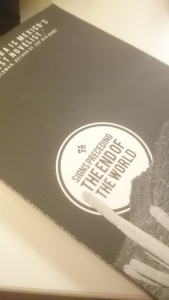 In general, despite the border being obviously the most apparent metaphor, the novel doesn’t care much for sharp distinctions. People are almost what they are. Friends are sometimes not quite friends, enemies not quite enemies, and the border that can destroy a young man is sometimes not the border between the US and Mexico, but the aerial border (of sorts) between the US and Afghanistan. The book toys with the idea of land, something that can be literally dug up and stolen – how deep goes identity? And then, the book offers us other oddities, among them neologisms, the central one of which is rendered by Lisa Dillman as “(to) verse” which means something like “to leave.” Dillman herself explains her coinage in a lovely and quite long and extensive translator’s note at the back. The original word in Herrera’s Spanish text was “jarchar,” a neologism derived from the Arabic. Neologisms and other mildly alienating tactics keep the readers on their toes, bar them from settling into easy identifications, and simple realism. That’s necessary because, except for a few passages here and there, the mythology of the novel, despite its importance for the book, is not expounded on at any length, really. By pushing his readers into a constantly angular sort of metafictional mood, he allows them to find all the subtle (and less so) references to the 9 levels of the Mictlan underworld, and appreciate the many levels of Makina’s quest. By engaging Aztec mythology, Herrera also opens a conversation with the narratives of Mexican nationalism, its limitations and possibilities, its overall scope. Of course there are the many small questions, such as: what does it mean when you are Mexican in the US? What if you can pass? What is the meaning of “home”? But more generally, Herrera’s touching on themes of life and death, of the impermanence of identity and the possibility of stories to resist that process of fading away. Herrera offers a petit récit and a Grand Narrative at the same time, undercutting the importance of both. And more importantly, he offers a magnificently written book. Look, all the details of speech and narrative, all the little linguistic and rhythmic details are not what really holds that novel together – it’s Herrera’s plain skill at telling a fantastic story. I have recently remarked on novels that are intellectually interesting but lack a storyteller’s heart – well, this little novel can do both, and with an apparent ease that makes me crave for more work by this extraordinary writer. A great novel. Go, read.
In general, despite the border being obviously the most apparent metaphor, the novel doesn’t care much for sharp distinctions. People are almost what they are. Friends are sometimes not quite friends, enemies not quite enemies, and the border that can destroy a young man is sometimes not the border between the US and Mexico, but the aerial border (of sorts) between the US and Afghanistan. The book toys with the idea of land, something that can be literally dug up and stolen – how deep goes identity? And then, the book offers us other oddities, among them neologisms, the central one of which is rendered by Lisa Dillman as “(to) verse” which means something like “to leave.” Dillman herself explains her coinage in a lovely and quite long and extensive translator’s note at the back. The original word in Herrera’s Spanish text was “jarchar,” a neologism derived from the Arabic. Neologisms and other mildly alienating tactics keep the readers on their toes, bar them from settling into easy identifications, and simple realism. That’s necessary because, except for a few passages here and there, the mythology of the novel, despite its importance for the book, is not expounded on at any length, really. By pushing his readers into a constantly angular sort of metafictional mood, he allows them to find all the subtle (and less so) references to the 9 levels of the Mictlan underworld, and appreciate the many levels of Makina’s quest. By engaging Aztec mythology, Herrera also opens a conversation with the narratives of Mexican nationalism, its limitations and possibilities, its overall scope. Of course there are the many small questions, such as: what does it mean when you are Mexican in the US? What if you can pass? What is the meaning of “home”? But more generally, Herrera’s touching on themes of life and death, of the impermanence of identity and the possibility of stories to resist that process of fading away. Herrera offers a petit récit and a Grand Narrative at the same time, undercutting the importance of both. And more importantly, he offers a magnificently written book. Look, all the details of speech and narrative, all the little linguistic and rhythmic details are not what really holds that novel together – it’s Herrera’s plain skill at telling a fantastic story. I have recently remarked on novels that are intellectually interesting but lack a storyteller’s heart – well, this little novel can do both, and with an apparent ease that makes me crave for more work by this extraordinary writer. A great novel. Go, read.







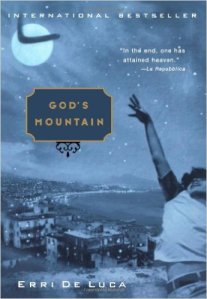 First things first: despite the title of this post and the bibliographic info at the top, I didn’t actually read this book in English. Nor, I have to say in shame, in Italian. The copy I have is in French, mostly due to financial reasons. That said, French is a great language for reading translations for me as far as Romance languages are concerned. The title of the book in Italian is Montedidio. Similarly, the French, German and sundry translations also opted to use that title. “Montedidio” is a Neapolitan word meaning “God’s Mountain,” as well as the name of a neighborhood in Naples and the English translator (or his editor) elected to take that title. On a forum, I once asked the translator of the English version of Jean-Claude Izzo’s novel Total Khéops why he elected to translate it as Total Chaos, since “Chaos” is not a translation of “Khéops” and the latter is a rich reference to the popcultural allusions in the book, especially to the Marseille rap scene. He pointed me to the publisher’s influence. I assume the same reasoning is at play here because within the confines of this novel, “Montedidio” makes more sense. The novel is written in Italian, not in Neapolitan dialect, and this is important for the book, so much so that the narrator addresses it in the very first chapter. The narrator explains that while he understands Italian, he doesn’t speak it. He writes in Italian, because it’s a kind of quiet, safe space, unlike the noisiness of the dialect that informs and forms the world around him. Italian is the language of books, of knowledge, of the powerful people. It scares his father who only speaks dialect. The novel specifically elected to take a title that derives from the local dialect. So I’m a bit unhappy about the English title. The book meanwhile is hard to gauge for me. Not that it’s hard to read or complicated – it’s a smooth, quick read which wears all its concerns on its sleeve. But, as I will point out below, there’s a thin line between cheesy and enchanting and the novel spends a lot of its time trying to straddle that line. I have not read a lot of Italian books these past years and they have been mostly terrible. This, despite its flaws, is the best of the bunch by miles.
First things first: despite the title of this post and the bibliographic info at the top, I didn’t actually read this book in English. Nor, I have to say in shame, in Italian. The copy I have is in French, mostly due to financial reasons. That said, French is a great language for reading translations for me as far as Romance languages are concerned. The title of the book in Italian is Montedidio. Similarly, the French, German and sundry translations also opted to use that title. “Montedidio” is a Neapolitan word meaning “God’s Mountain,” as well as the name of a neighborhood in Naples and the English translator (or his editor) elected to take that title. On a forum, I once asked the translator of the English version of Jean-Claude Izzo’s novel Total Khéops why he elected to translate it as Total Chaos, since “Chaos” is not a translation of “Khéops” and the latter is a rich reference to the popcultural allusions in the book, especially to the Marseille rap scene. He pointed me to the publisher’s influence. I assume the same reasoning is at play here because within the confines of this novel, “Montedidio” makes more sense. The novel is written in Italian, not in Neapolitan dialect, and this is important for the book, so much so that the narrator addresses it in the very first chapter. The narrator explains that while he understands Italian, he doesn’t speak it. He writes in Italian, because it’s a kind of quiet, safe space, unlike the noisiness of the dialect that informs and forms the world around him. Italian is the language of books, of knowledge, of the powerful people. It scares his father who only speaks dialect. The novel specifically elected to take a title that derives from the local dialect. So I’m a bit unhappy about the English title. The book meanwhile is hard to gauge for me. Not that it’s hard to read or complicated – it’s a smooth, quick read which wears all its concerns on its sleeve. But, as I will point out below, there’s a thin line between cheesy and enchanting and the novel spends a lot of its time trying to straddle that line. I have not read a lot of Italian books these past years and they have been mostly terrible. This, despite its flaws, is the best of the bunch by miles.
